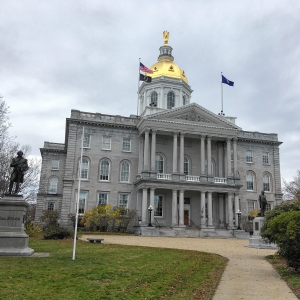Opinion: International leaders in the green hydrogen revolution
| Published: 07-14-2023 7:00 AM |
Kent Howard is a community energy activist, author, and journalist. Peter Somssich is a former state representative who served on the Science, Technology & Energy Committee.
China is the favorite to win the “Green Hydrogen Sweepstakes.” They currently produce one-third of the planet’s green hydrogen. In the U.S., 95% of the hydrogen produced is blue, made from fossil fuels. This still creates CO2. Green hydrogen, by definition, must be sourced from renewable energy: solar panels, hydroelectric or wind turbines.
With the entire world awakening to the many advantages green hydrogen offers, many countries are investing heavily to become established producers. As Jules Kortenhorst, CEO of the Rocky Mountain Institute (the premier clean energy think tank consulted by world leaders for decades), recently said at the Green Hydrogen Catapult (GHC) meeting in Glasgow, U.K. in November of 2021, “Green hydrogen is a critical part of a sustainable energy future and one of the largest business opportunities of our time. It is the key to decarbonizing hard-to-abate sectors of the world economy.” The GHC is a coalition of green hydrogen leaders working with the United Nations High-Level Champions for Climate Action.
Steelmaking, railroads, aviation, heavy-duty trucks, city buses, shipping, and heating and cooling are the “hard to abate sectors” needing clean green hydrogen and green ammonia. Both can be manufactured, stored, and transported for end use anywhere in the world. Those countries with deserts near oceans are realizing they’re sitting on a gold mine of opportunity. They are building solar-powered green hydrogen plants that desalinate the sea water, separate hydrogen and oxygen using electrolysis and combine the hydrogen with nitrogen from our atmosphere (78% nitrogen) to make green ammonia. In the process of producing energy, they also generate drinking water and fertilizer.
Saudi Arabia is investing billions to make green ammonia at their showcase city of Neom. That ammonia has already been pre-sold to a European city that plans to power its entire public bus system using green hydrogen. Australia is mostly a huge desert surrounded by the ocean. Their national energy policy is very focused on building green hydrogen and ammonia plants. This plan creates good jobs while making their children’s future energy infrastructure clean and green.
Chile and Peru have reliable, substantial winds and deserts near their coasts that are perfect for making green ammonia. In addition to the high-paying technical jobs that building clean renewable energy infrastructure will create, these countries want to create more export revenue.
In Germany’s region of Lower Saxony, the rail system is already operating 14 trains that are using H2 fuel. The trains connect Hamburg with numerous other regional cities such as Bremerhaven and Cuxhaven. Many other European Union countries have inquired about using this model for their railroad system.
Meanwhile, in the U.K., Zero Avia has developed the first H2-fueled aircraft engine. They expect to demonstrate flights up to 500 miles with aircraft of up to 20-seat capacity by late 2023. The city of Seoul, South Korea, will complete the replacement of its 1,300 city buses with ones powered by clean hydrogen by 2030. The plans envision replacing every municipal vehicle by 2030 with ones powered by H2. Other South Korean towns and cities are already showing interest to follow this example. Kia recently announced they intend to make a hydrogen-powered car that will cost half of what the Japanese Toyotas and Honda H2 cars cost here in 2023.
Article continues after...
Yesterday's Most Read Articles
 Concord solidifies plan to respond to homelessness
Concord solidifies plan to respond to homelessness
 Lawyers and lawmakers assert the Department of Education is on the verge of violating the law
Lawyers and lawmakers assert the Department of Education is on the verge of violating the law
 A May tradition, the Kiwanis Fair comes to Concord this weekend
A May tradition, the Kiwanis Fair comes to Concord this weekend
 Despite using federally funded math coaches, Concord math scores show little improvement
Despite using federally funded math coaches, Concord math scores show little improvement
 Concord planning board approves new casino zoning
Concord planning board approves new casino zoning
 On the trail: Biden back to N.H. next week
On the trail: Biden back to N.H. next week
The countries bordering the North Sea have formed a consortium called “The Fuel Cells and Hydrogen Joint Undertaking” to combine offshore wind energy with electrolysers to produce green H2. The North Sea region is seen as ideal due to the consistent winds and shallow water suited for turbine installation. ITM Power and Orsted along with other partners have received funding to integrate hydrogen electrolysers and offshore wind towers.
The energy group Total Energy and the hydrogen gas manufacturer Air Liquide are setting up a joint venture to build hydrogen refueling stations for heavy-duty vehicles in France, Benelux and Germany. The joint venture will be in place by the end of 2023.
In Italy, the largest European pipeline and gas storage company, Snam, has been experimenting with blending H2 into its current natural gas pipelines to provide fuel for heating and cooling and for industrial customers. They have determined that most of their pipelines could handle even 100% H2 with only minimal materials and infrastructure changes. Additionally, they claim that their pipelines would not only provide a network for transporting H2 to users, but the pipelines could also serve to store surplus H2 gas using compression.
]]>







 Opinion: Never again to anyone
Opinion: Never again to anyone Opinion: What it means to be an American
Opinion: What it means to be an American Opinion: Looking forward to resting in motion
Opinion: Looking forward to resting in motion Opinion: Technology and the human brain
Opinion: Technology and the human brain
